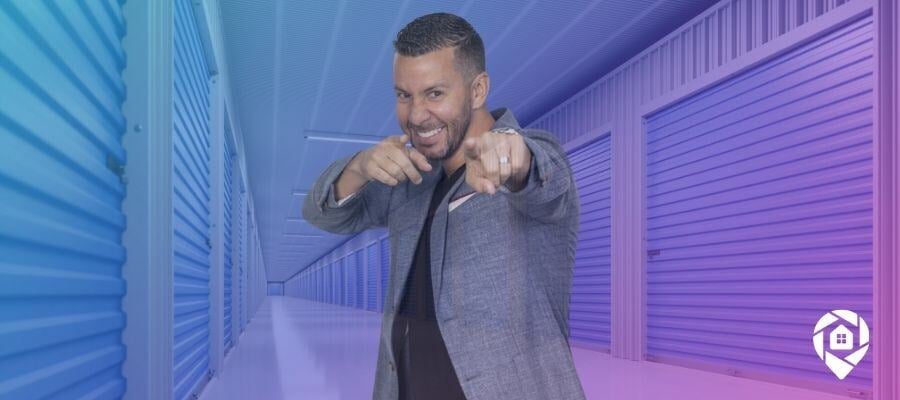
Alex Pardo's Blueprint to Self-Storage Wealth

Real estate investments have always been a reliable way to achieve financial freedom, but traditional methods like wholesaling and flipping houses come with their own set of challenges. Alex Pardo, a seasoned real estate investor, shared his enlightening journey from single-family homes to self-storage facilities. Let's delve into the core insights and lessons Alex offered, which can serve as a roadmap for anyone looking to diversify and succeed in the real estate industry.
From Wholesaling to Storage: Alex Pardo's Journey
The Turning Point in 2018
Alex Pardo began his real estate career in 2005, wholesaling and flipping single-family homes. After closing over 700 transactions, he had a significant turning point in 2018. Despite having a typical wholesaling setup with a team of acquisition managers, dispo managers, and lead managers, Alex felt trapped in what he described as a "hamster wheel" of chasing deals. While on a cruise, burdened by fallen-through contracts and business challenges, he realized something had to change.
A Desire for More
Alex joined a high-level mastermind group, and despite its supportive community, he confessed he hadn't honored his vision. He sought cash flow, wealth building, and time freedom—the promises of real estate—but found himself in a perpetual cycle of transactional deals. Reflecting on his situation, he questioned if continuing down this path would make him happy a year from then. The answers led him to rethink his career strategy.
The Appeal of Self-Storage Investing
Why Self-Storage?
Alex's transition into self-storage wasn't spontaneous. He immersed himself in understanding the asset class by coaching a storage facility owner and assessing the benefits. Unlike single-family homes, which often come with tenant issues, repairs, and high operating expense ratios (45%-55%), self-storage presented a more straightforward business model with an average operating expense ratio of 35%.
"We rent space, that's all. No tenants, no toilets, no headaches."
The Business Model
Self-storage is remarkably sticky as a product. Once customers move their items into a unit, moving out implies significant hassle—hiring a truck, organizing help, and spending a weekend relocating. This stickiness translates to long-term customers, often staying over 18 months, contributing to stable cash flow and profitability.
Moreover, as Alex points out, the market remains relatively untapped. With over 75,000 mom-and-pop-operated facilities in the country, there's ample opportunity for savvy investors.
Lessons from the Transition
Initial Struggles and Realizations
Initially, Alex faced zero results and no warm leads in the storage business. Through coaching, he realized the importance of doing the work. No tool, mastermind group, or product could replace the necessity of rolling up one's sleeves and diving in.
"Storage isn't a get-rich-quick scheme, just like the house business isn't."
March 2021 was a turning point. After defining daily actions leading to weekly, monthly, and annual wins, Alex was under contract for his first facility—nearly 43,000 square feet—by April. He closed this first deal in September 2021.
The Role of Coaching
Coaching played a crucial role. Alex emphasizes the importance of having a coach, highlighting how they can offer guidance, accountability, and perspective.
"A coach is the ultimate insurance policy. It guarantees support and accountability."
Since 2008, Alex has always had coaches and mentors in various areas of his life, underscoring their value in his journey. He believes in both receiving guidance from a coach and offering it to a mentee, fostering a cycle of learning and growth.
Practical Insights into Self-Storage Investing
Identifying the Right Deal
Alex suggests focusing on secondary and tertiary markets with populations between 10,000 to 60,000 people, median household incomes over $50,000, and increasing population trends. Look for mom-and-pop-operated facilities that aren't run efficiently or updated.
Valuation Differences
One significant difference between residential and commercial real estate is valuation. While houses are valued based on comps, commercial properties, including storage facilities, are valued based on the net operating income they produce. This shift means that enhancing a facility's income directly impacts its market value.
Structuring Deals
Funding can be a hurdle, but Alex's experience shows it’s manageable. He has used different strategies, including SBA financing, raising private money, and seller financing—without using his own money.
"If you find the right deal, the money will follow."
Building Relationships and Finding Opportunities
Approaching Owners
When reaching out to facility owners, Alex advises against a direct purchase approach. Instead, humble yourself, compliment the owners, and seek advice and guidance. This method establishes a connection and builds rapport, making future purchase conversations smoother.
"Humility opens more doors than asking to buy outright."
Using Tools Like DealMachine
DealMachine can be instrumental in virtually driving for dollars, tracking owner information, and managing leads. Storage investors can leverage the app’s extensive property data to filter and find potential deals within the storage sector.
Final Thoughts
Alex Pardo’s transition from the traditional wholesale real estate market to self-storage investing offers profound insights for those looking to diversify their real estate portfolio. His focus on doing the hard work, leveraging coaching, and targeting untapped markets provides a robust framework for success. Whether you're a seasoned investor or a newcomer, remembering that no tool or network can replace the work required is crucial.
"It's about honoring your vision and walking a path aligned with your purpose and values."
Self-storage investing presents an exciting opportunity, and with the right approach, tools, and mindset, it can become a significant avenue for achieving financial freedom.

About Maria Tresvalles
Maria Tresvalles is the dynamic Marketing Specialist at DealMachine, where she has been a key player for the past five years. With a strong background in customer relations, Maria started her journey at DealMachine as a Customer Success Coordinator, where she honed her skills in understanding customer needs and driving satisfaction.



